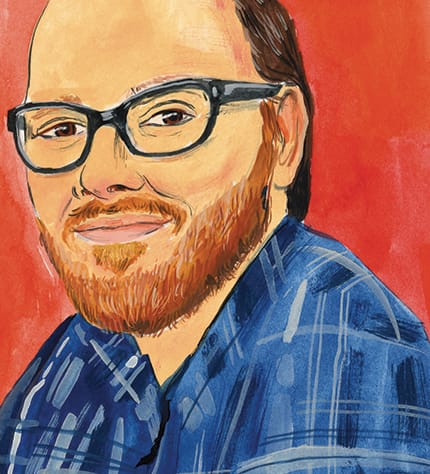Brandon Dean Lamson recalls how he turned away from his decision to commit suicide, and went to go sit zazen instead.
Practice, for me, began on the Dunlavy Bridge that spans eight lanes of traffic on US-59 in Houston, Texas. Several stories above eighteen-wheelers and commuter Saabs, I grabbed the railing and considered jumping, suspended in the late-afternoon light that sifted through chemical fumes and flashed off of windshields below. At the thought of free fall, the ache I’d been carrying in my chest and in my gut for months weakened.
I wasn’t aware, in that moment seven years ago, that scientists have found a second brain in the gut, a complex nexus of neural connections with complexity that rivals the gray matter in our skulls. Researchers have discovered that the gut contains a hundred million neurons—more than the spinal cord—and is also influenced by important neurotransmitters. Enlightened beings have spoken of the wisdom and power of this second brain for centuries, calling it the hara, the third chakra, the womb of the buddhas.
As I stood on the bridge during rush hour, I believed that what was inside me would destroy me. I’m not sure exactly why I didn’t jump, why some note in that siren’s song was off-key, but eventually I grew bored and self-conscious and decided to walk to the other side of the bridge, toward the elm-lined streets that surround Rice University. The next day I knew I did not want to return to the bridge, so I did what I least wanted to do: I sat zazen.
One of my friends was the business manager of Dawn Mountain, a Tibetan Buddhist practice center within walking distance of the bridge; she worked there on weekdays in an office above the meditation hall and had offered to let me sit downstairs for as long as I wanted. That afternoon, I buzzed the intercom and she descended the stairs and opened the door, urging me to make myself at home. Surrounded by thangka paintings that depicted buddhas and wrathful deities in brilliant reds and blues, I sat facing an image of Avalokiteshvara, the bodhisattva of compassion.
The first several minutes were the most difficult—I did not want to sit with the brain in my gut. I needed to do something, to figure something out, to understand how my life had become this. I needed to stand up and leave the meditation hall. I needed to run outside, rip off my clothes, and pound my forehead against the curb, or maybe jump in my car and drive fast until I rammed into something—anything but sit still in an upright posture and follow my breath. Anything but bring attention to the pain, inhaling its sticky black tar and grit. I sat because there was nothing else to do; I was broken, out of control, confused. Eventually, as those who have sat during their darkest hours know, the suffering body and mind began to drop away. I could sense glimmers of space around the core of pain.
I returned to Dawn Mountain the next afternoon, and the next. Soon I realized that sitting was the best thing—the only thing—I could do in moments of crisis. Even if I sat there and wept, even if I could bring my attention to my breath for only a few seconds, then as Suzuki Roshi said, “That is all right, that’s suffering Buddha. No confusion in it.” There in that suffering, in the fire of my gut, I awakened to what practice is.
